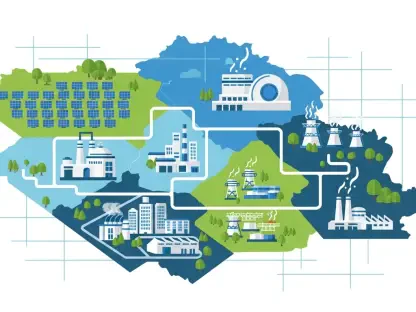In the fast-evolving landscape of oil markets, prices recently reached a historic threshold or plateau, triggering both curiosity and investor attentiveness. Early turbulence from geopolitical tensions has subsided, creating a precarious balance stabilized by anticipated production increases orchestrated by OPEC+. This analysis aims to unravel the complexities contributing to this phenomenon, offering nuanced interpretations critical for stakeholders.
Navigating Oil Price Fluctuations and Stability
Oil prices recently exhibited unexpected stability following geopolitical de-escalations and strategic production moves by OPEC+, shaping the market dynamics in intriguing ways. Notable benchmarks like Brent and U.S. crude experienced significant monthly gains, reaching over 6% and 7%, respectively. Initial price shifts arose amid a brief conflict between Israel and Iran that moderately disrupted markets, elevating prices beyond $80 per barrel. The rapid establishment of a ceasefire has neutralized high supply risk premiums, calming the market waters.
An additional dimension influencing price trends is record-setting U.S. crude production levels, peaking at 13.47 million barrels per day. Meanwhile, OPEC+ plans to bolster output by 411,000 barrels per day from August onward, totaling an increase of 1.78 million barrels per day, influencing global supply significantly. Analysts suggest that these figures present a latent supply pressure likely unaccounted for within current pricing, exposing vulnerabilities within the market structure.
Sector-Specific Constraints and Market Adaptation
Despite decisions toward increased production, persistent sector-specific impediments continue to manifest in market dynamics. Although OPEC’s May output has seen marginal improvements, Saudi Arabia and UAE’s quota underutilization reveals challenges. Additionally, reductions from nations exceeding quotas seem obvious and highlight a tangled scenario. Innovative upgrades in Kazakhstan’s Caspian oilfields beckon potential production shifts, possibly exceeding forecasts. Evaluations from economic experts suggest a Brent crude average of $67.86 per barrel, indicating a prolonged yet manageable price landscape.
Forward-Looking Market Trends and Predictions
Emerging trends within the oil industry underscore pivotal influences shaping its path. Shifts in geopolitical landscapes, coupled with robust technological advancements in energy production and extraction processes, are poised to reshape market paradigms. A continued pivot towards renewable energy sources emerges as a critical factor, potentially redefining traditional oil markets. Analysts project regulatory shifts favoring sustainable energy solutions, encouraging stakeholders to remain adaptive in navigating such transformative shifts.
Implications and Strategic Recommendations
The analysis identifies essential elements that require careful consideration, including geopolitical stabilization, strategic output management, and adept responsiveness to sector-specific constraints. Business leaders and industry professionals can leverage these insights into actionable strategies. Organizational resilience and adaptable planning serve as vital components for thriving within an ever-changing market environment.
The plateau in oil prices signifies a sophisticated interplay between geopolitical maneuvers and OPEC+’s decisions, presenting broader implications on global markets and energy strategies. As the sector continues to evolve, adaptation remains necessary for securing sustainable growth and maintaining economic equilibrium in forthcoming endeavors.









